Composting is a natural recycling process of organic matter. In addition, it produces valuable fertilizer that enriches plants and soil. So, let’s find out the best worms for composting. Composting with worms is a win-win for all. For example,
- It provides a suitable way to dispose of food waste such as rotten fruits and vegetables and peelings
- It gives worms a home and an endless food source to be happy
- It saves space in country landfills which is good for the environment
Compost comprises plant material such as food and vegetable peelings, dead, fallen plant leaves, and torn branches.
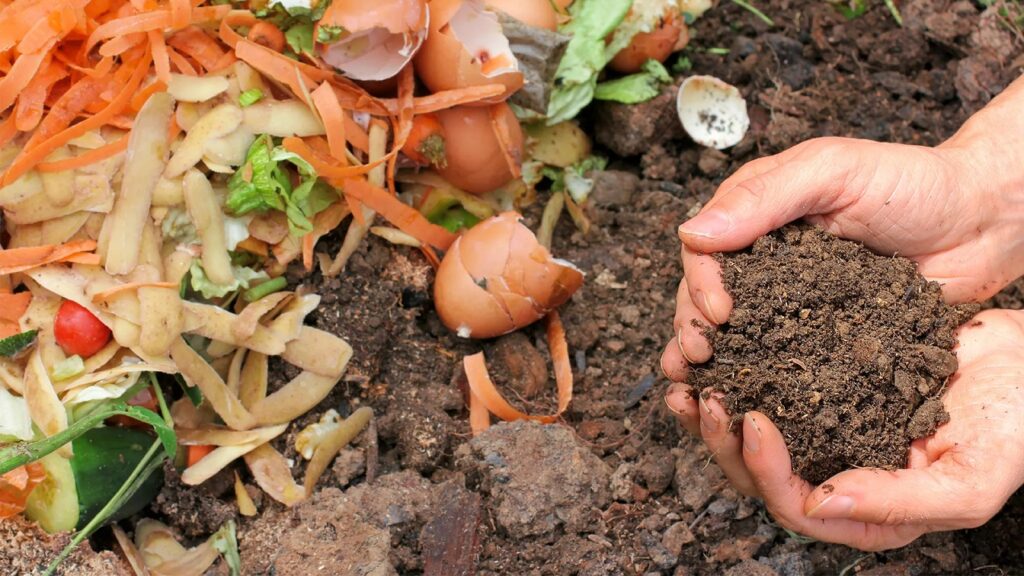
Compost making with eggshells, fruit, and vegetable waste
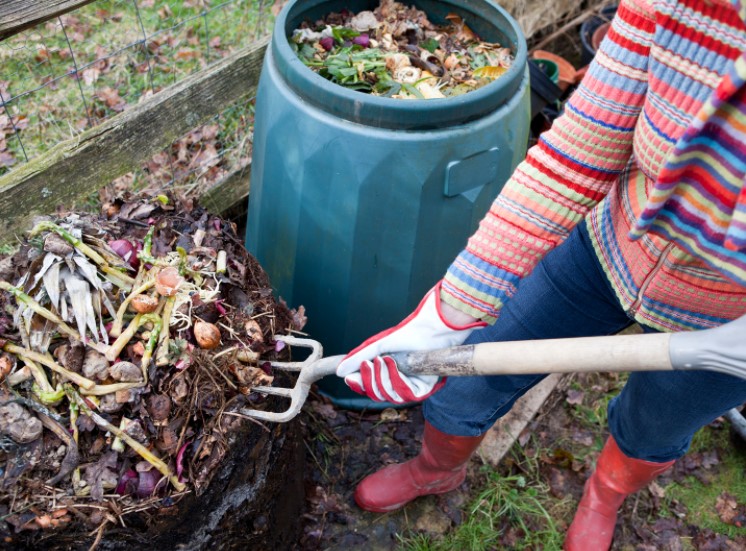
Mixing of compost at home
Homegrown compost is the best way to feed and nurture your plants if you own a large garden and potted plants.
What Is Worm Composting?
Composting worms, also known as vermicomposting, make nutrient-rich food or organic fertilizer for plants by breaking down organic material such as food scraps and garden waste.
In this process, red wigglers are used, which feed on food scraps that become compost as they pass through the worm’s digestive tract. Then compost exits the worm’s body through the tail’s side and is termed worm castings.
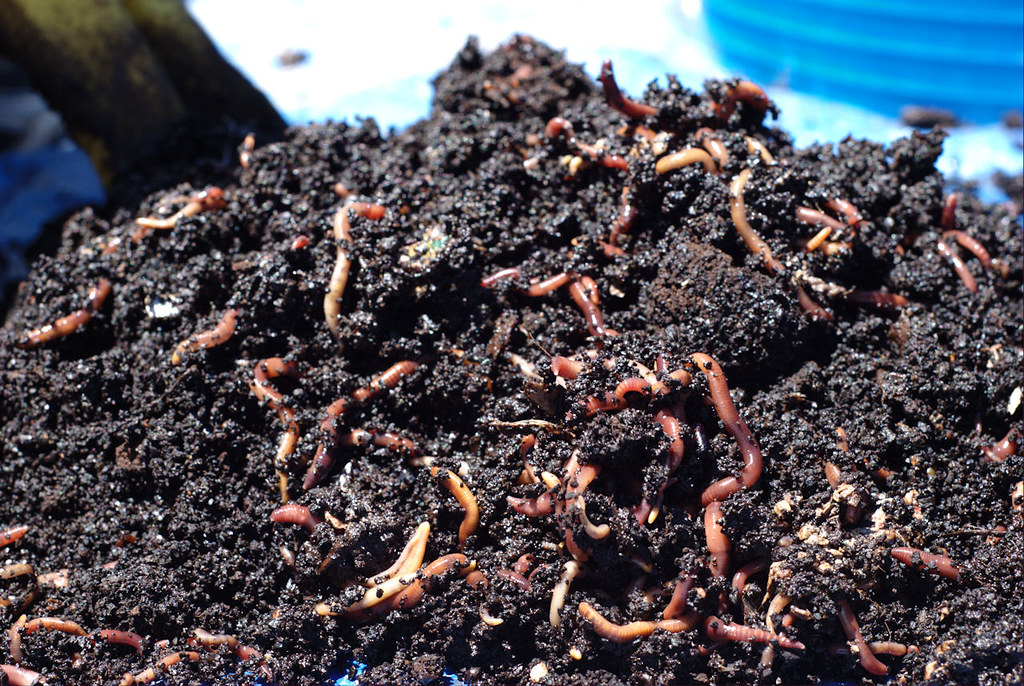
Red wiggler worms in action—they are actively eating food scraps and plant material.
Note: One critical understanding is the red wigglers are eating nutrient-rich food scraps and turning them into nutrient-rich organic fertilizer.
RELATED: What Is Eating Holes in Your Tomatoes? | Causes and Solutions
What Are The Types Of Best Worms For Composting?
One of the most effective worms for composting is the red wiggler worm (Eisenia fetida). They are also known as manure worms, red worms, or tiger worms. However, before discussing red wigglers and their excellent composting capabilities, it is essential to understand the different types of compost worms.
These red worms are divided into various groups based on their soil burrowing capabilities and the environments they sustain. For example, endogeic, anecic, and epigeic worms are different types of earthworms.
Epigeic Worms Or Red Wiggler Worms
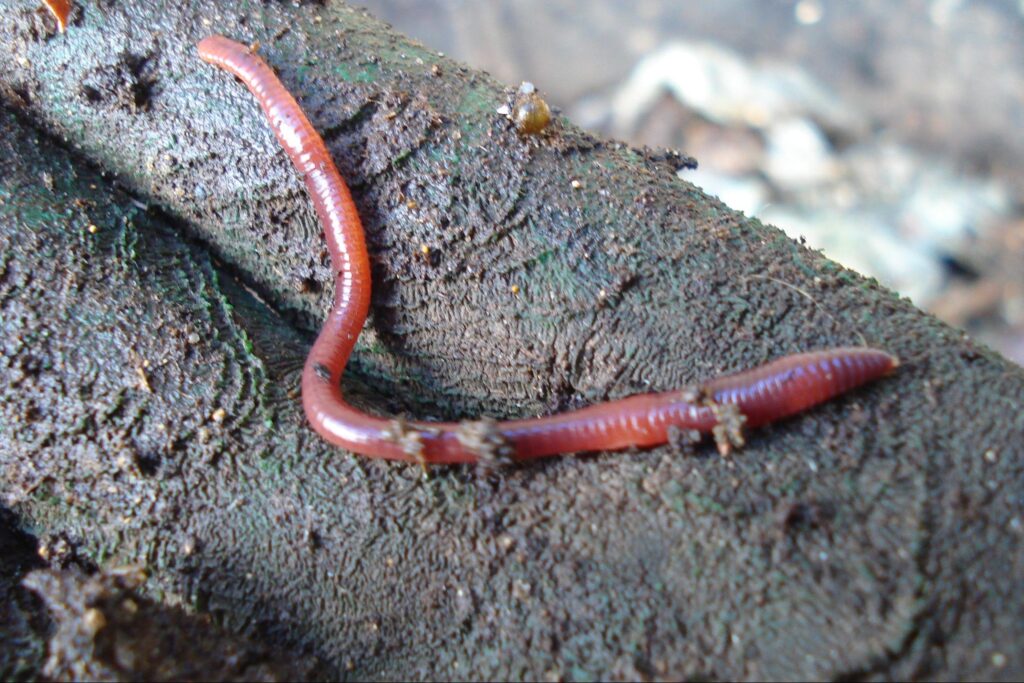
A red wiggler from the compost pile—one of the best of many worm species
Red wiggler worms are specialized surface dwellers. They live in the soil’s upper layers, do not make tunnels and mud, and are not found in subsoil. These red worms prefer to be on the soil surface (rich in decaying organic matter) and feed on organic scraps. Therefore the red wigglers are a suitable choice for the composting worm.
Anecic Worms
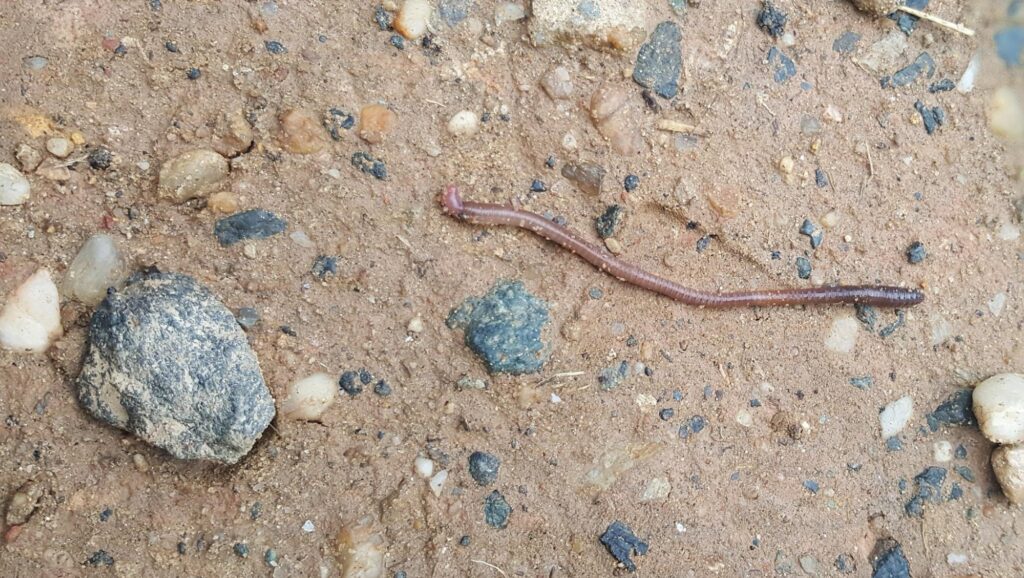
Anecic worm is a strong soil dweller but does not belong to the suitable compost types of worms
Anecic worms live in deep burrows in the soil as deep as 3m. They can burrow deep in the soil horizontally and vertically. They collect food from the ground and pull down the leaf litter in their deep tunnels for digestion.
Anecic worms, just like African nightcrawlers, are best for garden soil because they are strong enough to make deep tunnels and help in air circulation and water distribution. Moreover, they also reduce soil compaction—which is excellent for healthy root growth.
This worm species is unsuitable for vermicomposting because they do not feed on the soil surface (eat organic matter below the surface).
Endogeic Worms
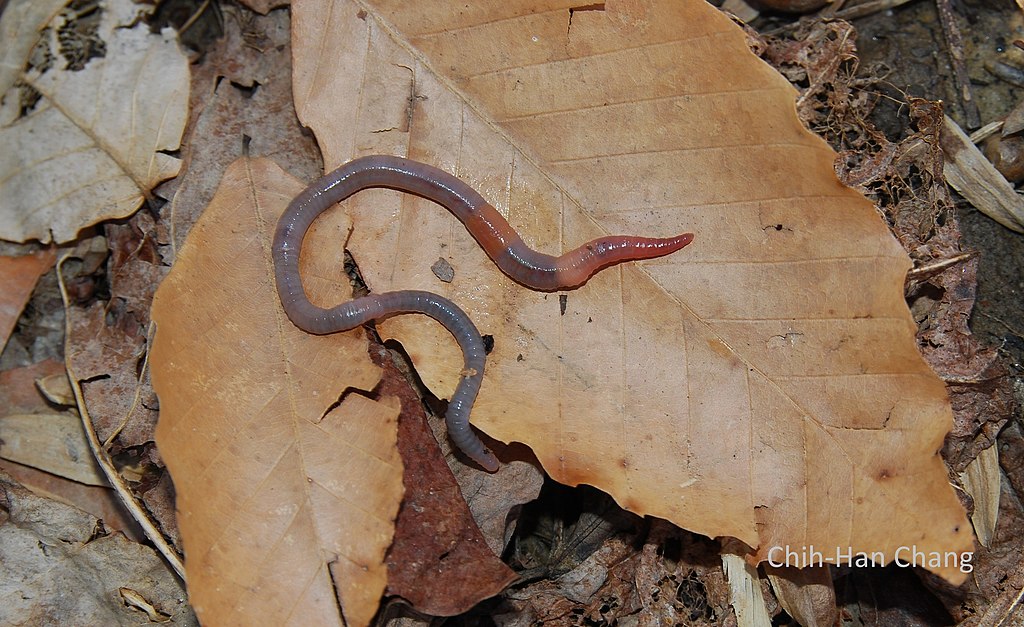
Endogeic worms make horizontal tunnels in the soil
Endogeic worms make horizontal tunnels in the soil and are less profound than anecic worms. They also take their food from the soil surface and remain in shallow holes. However, they rarely come to the soil surface and make less stable holes in the soil.
The epigeic worms are the best composter to produce worm castings of all these worms.
The red wigglers are the best epigeic worms because they live on or near the soil surface and produce nutrient-rich castings.
Red Wigglers
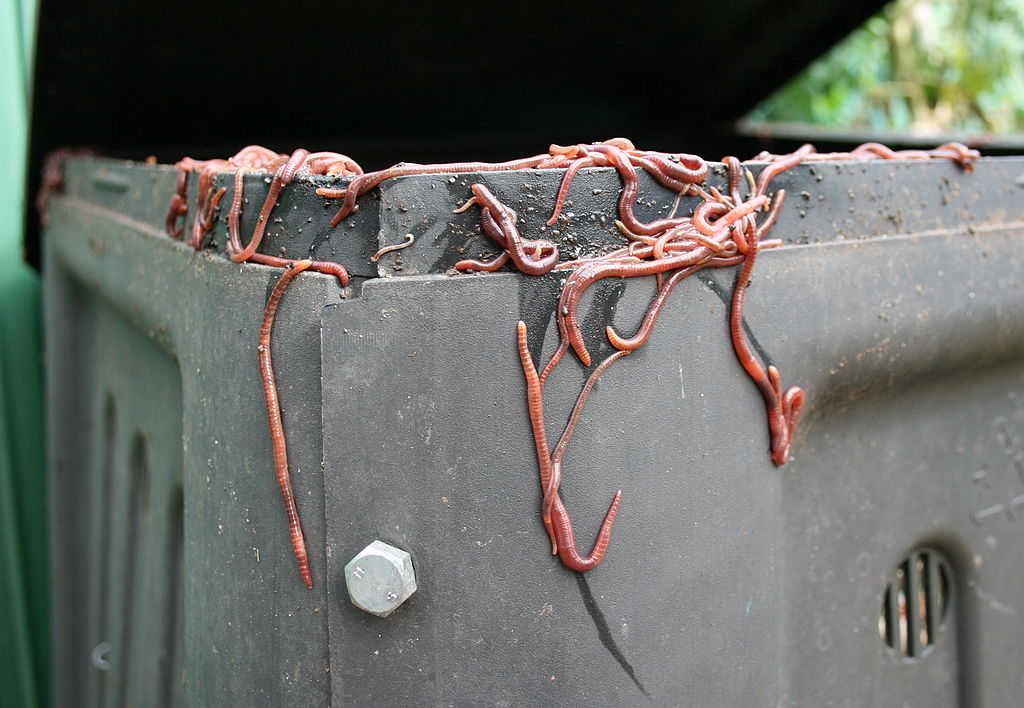
Red wigglers in a composting bin—best for composting
Red wigglers do not make deep tunnels in the soil. On the other hand, they live on the ground and eat nutrient-rich, decaying organic material.
The attributes that make red wigglers the best choice for composting worms:
- Red wiggler worms tolerate a wide range of temperatures, such as 40 to 90°F, but they do best at 55 and 77°F.
- They can tolerate a pH range of 4 to 9 but do best at 5.5 pH levels.
- They have a higher rate of ingestion and digestion. For example, red worms can eat as much organic matter as their body weight. The digestive tract of red wigglers contains 1000 times the more significant number of super hungry microbes, and these microbes insist the red wiggler ingest more and more.
- Red wigglers reproduce rapidly, such as double their population within about 60 days.
- They are cheaper to purchase than other species, and once they are in the compost worm bin, they double their populations quickly.
Note: Red wigglers are sensitive to light. Therefore, use an opaque worm bin with holes to maintain proper ventilation.
RELATED: How To Get Rid Of Tiny Clear Worms In The Soil For Good?
European Nightcrawlers
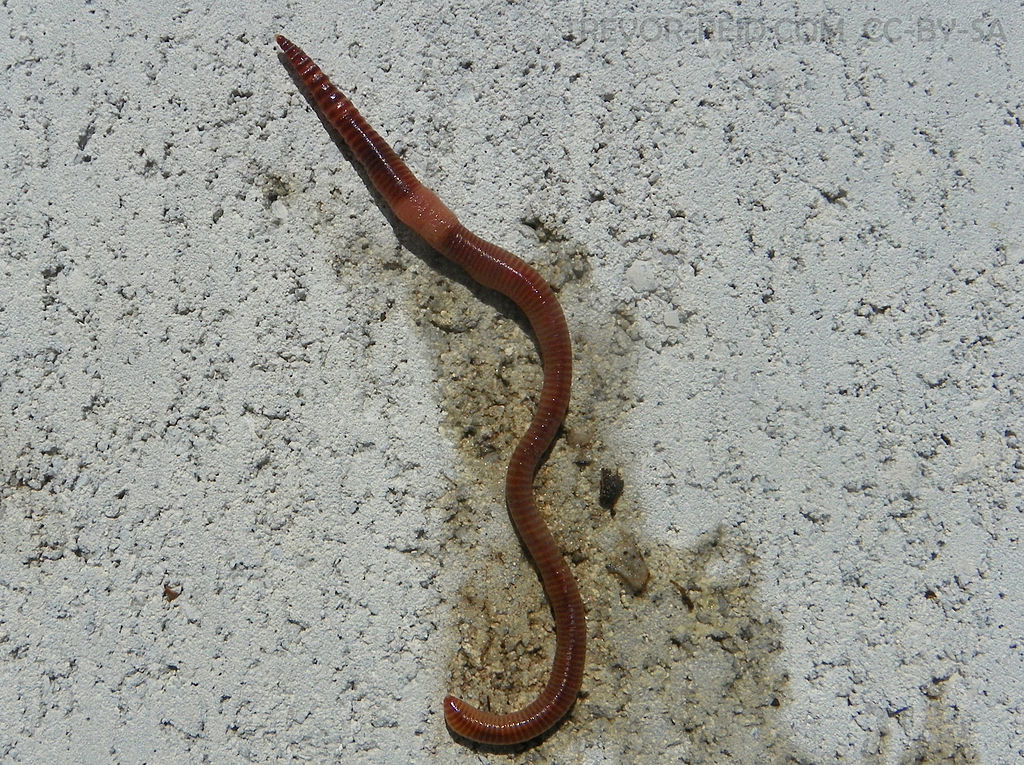
A European nightcrawler—the larger cousin of red worms
The European nightcrawlers are suitable for vermicomposting but not the best compared to blue worms. It is because these worms can not tolerate a wide range of temperatures and are unable to reproduce quickly. Finally, a European nightcrawler is more costly than blue worms.
The Materials Required For Vermicomposting
The following materials are for vermicomposting:
- Worm bins
- Worms (red wigglers)
- Biodegradable bedding
- Food for worms
What Are The Characteristics Of Good Composting Worms?
The worms for vermicomposting should have the following characteristics:
- Composting worms should have higher adaptability to various environmental conditions such as temperature, rainfall, and relative humidity. For their (compost worms) proper activity, the soil temperatures should not exceed 35°C. In addition, there should be plenty of water and air for 45 days.
- Composting worms should have a higher feeding preference for various organic materials.
- They should have a higher growth rate.
- The composting worm has higher adaptability to different kinds of waste material.
- Composting worms should have high rates of consumption, digestion, and assimilation.
- They should have resistance to diseases and other pests.
- Composting worms should be compatible with other worms.
- They should have higher activity periods, such as the time for earthworms to feed after introducing the worm bin.
Essential Factors To Avoid In Vermicomposting
Worm composting is a great way to handle kitchen scraps properly and turn them into helpful fertilizers for plants and soil. While composting with worms, avoid the following mistakes; otherwise, it will result in zero output.
Avoid Overfeeding Of Worms
Do not toss the worm bins with every available scrap because the worm only eats their weight in food sources per day. Therefore, the best way is to feed them after every 2 to 3 days.
Avoid Wrong Food
The ideal food for compost worms is eggshells, non-acidic fruits, vegetables, shredded peels, grains, bread, and coffee grounds. Avoid adding processed food waste to compost bins because these items produce a terrible smell and make it impossible for worms to eat and digest.
Avoid Too Wet And Too Dry Bedding
If the bedding is too wet, the worms will drown and will not be able to recycle the food waste. On the other hand, if the bedding is too dry, it will dehydrate the worms, unable to breathe, and die. So, the ideal bedding moisture levels should be like a sponge (squeeze liquid by pressing).
Timely Harvest The Worm Castings

Freshly harvested worm castings, ready to add to gardens
To reap the compost, mark the days as
- At the start of the growing season.
- When the worm bin is getting full.
- At the end of the season.
- The worms have been in the bin for three months and filled with castings.
Frequently Asked Questions
What Is The Difference Between Red Wiggler Worms And Nightcrawlers?
| Red Wiggler Worms/ Compost Worms | Nightcrawlers/ Dew Worms |
| Used in vermicomposting | Feed on the soil surface at night |
| They reach a length of 3 to 5 inches | They reach a size of 3 to 8 inches |
| Have greater adaptability to eat a wide variety of decaying food material | Only feed in the soil |
| Appear as reddish-purple | Appear as grayish red |
Should I Stir My Worm Bin?
There is no need to stir the material of bins because the worms—themselves mix the food material along the way of eating.
Do Nightcrawlers Make Good Composting Worms?
The most common and suitable choice for composting is red worms. However, other worm species can be used for composting, such as
- African nightcrawlers
- European nightcrawlers
- Canadian nightcrawlers
All these species of nightcrawlers can be utilized for vermiculture. They help the soil by improving water distribution and air circulation. Moreover, these worms make deep tunnels in the ground that allow water movement and reduce soil compaction.
How Many Worms Do I Need For Composting?
The number of worms in the composting bin depends upon the number of scraps produced. Ideally, every two pounds (1 kg) of food waste will require 2000 red worms for the composting bin. However, the number of worms in composting bins greatly varies as per the gardener’s preferences. Some prefer to add a higher number of worms for quick results (castings), while the others incorporate a smaller number of worms.
Can Worms Eat Banana Peels?
Banana peels are an excellent food for composting worms (red wigglers, Canadian nightcrawler, African, and European nightcrawler). Banana peel, flesh, and older skin can be used to feed the worms. They can quickly break down the old banana peels and flesh that has gone brown.
Are Nightcrawlers Good For The Garden?
Nightcrawlers are amazing for garden soil because they enhance soil fertility by adding nutrient-rich castings. They also improve soil aeration and water distribution (also made oxygen penetration easier).
How Long Do Compost Worms Live?
Worms can live for almost one year in a compost bin. However, for keeping the recycling process going, reproduction is critical. Under the right conditions, red worms start reproduction within 30 to 45 days and double their population in 60 days.
If a worm dies in your compost bin, you will not notice it because its body is 90% water, and it’ll become part of the compost quickly.
Sources For Further Reading
- A Beginners Guide To Worm Composting. (2020, April 3). University of Illinois Extension. Retrieved March 31, 2022, from https://extension.illinois.edu/blogs/know-how-know-more/2020-04-03-beginners-guide-worm-composting
- Angima, S., Noack, M., & Noack, S. (2011, October). Composting with Worms. Oregon State University. Retrieved March 31, 2022, from https://catalog.extension.oregonstate.edu/sites/catalog/files/project/pdf/em9034.pdf
- The Basics of Vermicomposting – Oklahoma State University. (2017, February 1). OKLAHOMA STATE UNIVERSITY. Retrieved March 31, 2022, from https://extension.okstate.edu/fact-sheets/the-basics-of-vermicomposting.html
- Vinje, E. (2021, April 26). Worm Composting 101. Planet Natural. Retrieved March 31, 2022, from https://www.planetnatural.com/worm-composting/
Now that you know the best worms for composting, read our other articles:
Black Beetles 101: Types and A Comprehensive Identification Guide with Pictures
Black Caterpillar Types: How to Identify Common Species, Fun Facts and More!
Identification and Control of Darkling Beetles by Natural and Chemical Ways







